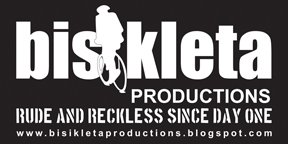This 3-hour documentary tells the story of Studio One, Jamaica's most important record label in the history of Reggae.
Filmed in Kingston, the documentary has interviews with many of the artists who Studio One made famous - Horace Andy, Alton Ellis, Ken Boothe, Sugar Minott etc.
The main interview is with Clement "Sir Coxsone" Dodd, owner and founder, and the documentary tells the story of his life and the impact he has had on Reggae music in Jamaica and the rest of the world.
Studio One is the foundation label of Jamaican Reggae. Often described as the Motown of Jamaica, Studio One is where the career of literally hundreds of Reggae artists began - Bob Marley and the Wailers, Alton Ellis, The Heptones, Ken Boothe, The Skatalites, Burning Spear - everyone! Lee Perry was a handyman there and Prince Buster a bouncer.
The film also visits Trenchtown's old Dancehalls, the Alpha School for wayward Boys (run by Nuns), Tuff Gong Studios and Pressing Plant, Orange street (Jamaica's Tin Pan Alley) and many sites relating to the story.
There is rarely seen vintage footage of musical performances, interviews, Haile Selaisse's arrival in Jamaica and even early music videos (from the 1960s). Much of this footage has rarely been seen outside Jamaica.
Filmed in Kingston, the documentary has interviews with many of the artists who Studio One made famous - Horace Andy, Alton Ellis, Ken Boothe, Sugar Minott etc.
The main interview is with Clement "Sir Coxsone" Dodd, owner and founder, and the documentary tells the story of his life and the impact he has had on Reggae music in Jamaica and the rest of the world.
Studio One is the foundation label of Jamaican Reggae. Often described as the Motown of Jamaica, Studio One is where the career of literally hundreds of Reggae artists began - Bob Marley and the Wailers, Alton Ellis, The Heptones, Ken Boothe, The Skatalites, Burning Spear - everyone! Lee Perry was a handyman there and Prince Buster a bouncer.
The film also visits Trenchtown's old Dancehalls, the Alpha School for wayward Boys (run by Nuns), Tuff Gong Studios and Pressing Plant, Orange street (Jamaica's Tin Pan Alley) and many sites relating to the story.
There is rarely seen vintage footage of musical performances, interviews, Haile Selaisse's arrival in Jamaica and even early music videos (from the 1960s). Much of this footage has rarely been seen outside Jamaica.
